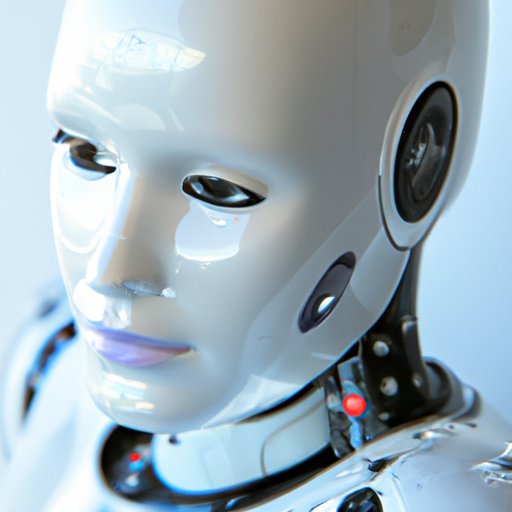Introduction
Humanoid robots are robots that possess human-like characteristics and abilities. This includes physical features such as arms and legs, facial expressions, and even speech capabilities. In recent years, the development of humanoid robotics has advanced significantly, with more and more applications emerging in everyday life. This article will explore what a humanoid robot is, its history, different types, benefits, challenges, ethical considerations, and potential future uses.

A History of Humanoid Robotics
The concept of humanoid robotics has been around for centuries. Early examples of humanoid robots date back to ancient Greece, where philosopher and scientist Archytas of Tarentum created an artificial wooden dove powered by steam. Since then, there have been numerous developments in humanoid robotics, with the first modern-day humanoid robot, Elektro, being unveiled at the 1939 New York World’s Fair.
In the decades since, humanoid robotics has evolved significantly. According to Dr. Takashi Minato, Director of the Humanoid Robotics Institute at Osaka University, “Advances in robotics technology have enabled us to create humanoid robots capable of performing complex tasks and interacting with humans in a natural way.” Recent advancements in humanoid robotics include robots that can walk, run, and even dance.

Exploring the Different Types of Humanoid Robots
There are several different types of humanoid robots, each designed for specific purposes. Industrial humanoid robots are used in factories, warehouses, and other industrial settings to automate tasks such as assembly line work. These robots are typically highly specialized and feature advanced AI capabilities that allow them to complete tasks quickly and accurately.
Humanoid robots can also be used for entertainment purposes. These robots are often equipped with sensors and cameras that enable them to interact with their environment and respond to external stimuli. They can be programmed to perform a variety of tasks, such as playing music, dancing, or telling jokes.
Finally, humanoid robots can be used for medical and scientific applications. These robots are designed to assist healthcare professionals in diagnosis and treatment, as well as to carry out research in a variety of fields. Examples include robotic surgical systems, which are used to perform delicate operations, and robotic exoskeletons, which are used to help people with mobility impairments regain some of their lost movement.
The Benefits and Challenges of Humanoid Robotics
Humanoid robotics offers numerous advantages. For example, robots can perform tedious and dangerous tasks without putting human lives at risk. Additionally, they can operate continuously without requiring rest, making them ideal for repetitive tasks. Finally, robots are able to process large amounts of data quickly and accurately, enabling them to make decisions faster than humans.
However, there are also some drawbacks associated with humanoid robotics. For instance, robots require substantial investments in terms of time, money, and resources. Additionally, robots are unable to think creatively or adapt to changing situations, which limits their ability to handle unexpected events. Finally, robots lack the empathy and emotional intelligence of humans, which can make it difficult for them to interact effectively with people.
How Humanoid Robots are Used in Everyday Life
Humanoid robots are already being used in a variety of everyday applications. For example, service robots are being used in hotels, restaurants, and airports to provide customer service. Additionally, educational robots are being used in classrooms to help students learn and engage with course material. Finally, personal robots are being used in homes to provide companionship, perform household chores, and even monitor health.
In the future, humanoid robots may become even more commonplace. For example, they could be used to provide medical assistance to elderly people living alone, as well as to provide companionship to those who are isolated. Additionally, robots could be used in search and rescue operations, as well as to explore hazardous environments that are too dangerous for humans.

Ethical Issues Surrounding Humanoid Robotics
The development of humanoid robotics raises a number of ethical concerns. For instance, robots could potentially be used for malicious purposes, such as surveillance or espionage. Additionally, robots could cause psychological harm if they are not programmed to interact appropriately with humans. Finally, robots could take away jobs from humans, leading to economic inequality.
To mitigate these ethical concerns, steps should be taken to ensure that robots are developed responsibly. This includes requiring developers to adhere to ethical guidelines and establishing regulations to govern the use of robots. Additionally, it is important to ensure that robots are programmed to interact appropriately with humans and that they are not given autonomy over decisions that could affect human lives.
The Future of Humanoid Robotics
The future of humanoid robotics is promising. Recent trends in the field include the development of robots that can recognize and respond to emotions, as well as robots that are capable of learning and adapting to their environment. Additionally, advances in artificial intelligence are allowing robots to become increasingly autonomous.
Experts predict that in the near future, humanoid robots will become more widespread. They could be used in a variety of applications, ranging from healthcare to education to entertainment. Ultimately, humanoid robots could become an integral part of our daily lives, providing assistance and companionship in ways that were previously unimaginable.
Conclusion
Humanoid robotics is a rapidly advancing field with a wide range of potential applications. From industrial robots to entertainment robots to medical robots, humanoid robots are becoming increasingly common in everyday life. However, ethical considerations must be taken into account when developing and using robots, and steps must be taken to ensure that robots are used responsibly. Ultimately, the future of humanoid robotics is bright, and the possibilities are endless.
(Note: Is this article not meeting your expectations? Do you have knowledge or insights to share? Unlock new opportunities and expand your reach by joining our authors team. Click Registration to join us and share your expertise with our readers.)
